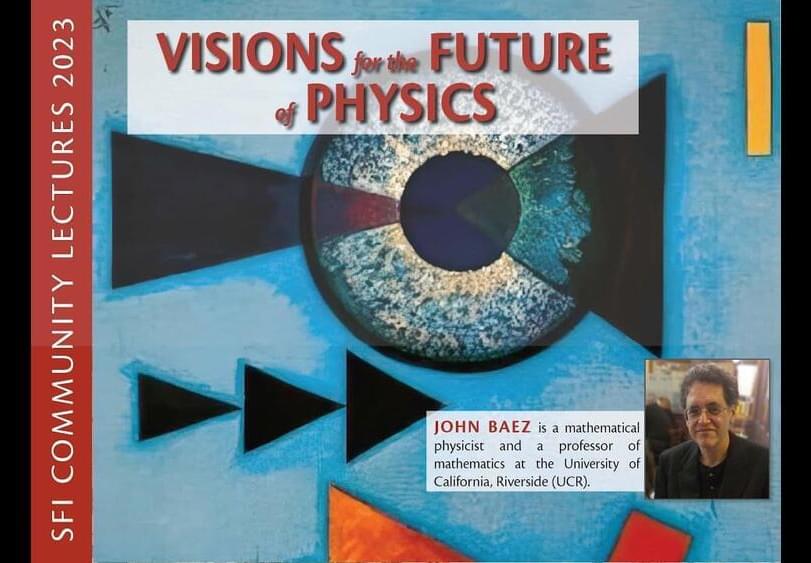John Baez University of California, Riverside The 20th century was, arguably, the century of physics. While there was immense progress on so-called fundam…

John Baez University of California, Riverside The 20th century was, arguably, the century of physics. While there was immense progress on so-called fundam…
CERN’s data store has now crossed the remarkable capacity threshold of one exabyte, meaning that CERN has one million terabytes of disk space ready for data!
CERN’s data store not only serves LHC physics data, but also the whole spectrum of experiments and services needing online data management. This data capacity is provided using 111 000 devices, predominantly hard disks along with an increasing fraction of flash drives. Having such a large number of commodity devices means that component failures are common, so the store is built to be resilient, using different data replication methods. These disks, most of which are used to store physics data, are orchestrated by CERN’s open-source software solution, EOS, which was created to meet the LHC’s extreme computing requirements.
“We reached this new all-time record for CERN’s storage infrastructure after capacity extensions for the upcoming LHC heavy-ion run,” explains Andreas Peters, EOS project leader. “It is not just a celebration of data capacity, it is also a performance achievement, thanks to the reading rate of the combined data store crossing, for the first time, the one terabyte per second (1 TB/s) threshold.”
Researchers have utilized Alfvén waves to mitigate runaway electrons in tokamak fusion devices, offering significant implications for future fusion energy projects, including the ITER in France.
Scientists led by Chang Liu of the Princeton Plasma Physics Laboratory (PPPL
The U.S. Department of Energy’s Princeton Plasma Physics Laboratory (PPPL) is a collaborative national laboratory for plasma physics and nuclear fusion science. Its primary mission is research into and development of fusion as an energy source for the world.
Indirect observations of a strange isotope of nitrogen, nitrogen-9, could open new avenues of understanding of nuclear theory.
A group of researchers has discovered direct evidence of a new atomic nucleus that stretches what we understand of nuclear physics. Called nitrogen-9, this isotope contains seven protons and two neutrons and only exists for one billionth of a nanosecond. That is such a minute amount of time that it is difficult for scientists to agree if this really is an atomic isotope or not.
EzumeImages/iStock.
Continue reading “New nitrogen isotope stretches our understanding of nuclear physics” »
A strange pair of galaxies several billion light-years away could be evidence of a hypothetical ‘crease’ in the Universe’s fabric known as a cosmic string.
According to an analysis of the properties of the pair, the two galaxies may not be distinct objects, but a duplicate image caused by a trick of the light. And the reason the light is duplicated could be because of a scar in the space between us and the galaxy, creating a gravitational lens.
A paper describing this cosmic string candidate, led by Margarita Safonova of the Indian Institute of Astrophysics, has been accepted in the Bulletin de la Société Royale des Sciences de Liège, and is available on preprint server arXiv.
For those still holding out hope that antimatter levitates rather than falls in a gravitational field, like normal matter, the results of a new experiment are a dose of cold reality.
Physicists studying antihydrogen—an anti-proton paired with an antielectron, or positron—have conclusively shown that gravity pulls it downward and does not push it upward.
At least for antimatter, antigravity doesn’t exist.
Every so often, astronomers glimpse an intense flash of radio waves from space—a flash that lasts only instants but puts out as much energy in a millisecond as the sun does in a few years. The origin of these “fast radio bursts” is one of the greatest mysteries in astronomy today.
There is no shortage of ideas to explain the cause of the bursts: a catalog of current theories shows more than 50 potential scenarios. You can take your pick from highly magnetized neutron stars, collisions of incredibly dense stars or many more extreme or exotic phenomena.
How can we figure out which theory is correct? One way is to look for more information about the bursts, using other channels: specifically, using ripples in the fabric of the universe called gravitational waves.
The study’s authors compared the influence of two components of the brain’s physical structure: the outer folds of the cerebral cortex — the area where most higher-level brain activity occurs — and the connectome, the web of nerves that links distinct regions of the cerebral cortex. The team found that the shape of the outer surface was a better predictor of brainwave data than was the connectome, contrary to the paradigm that the connectome has the dominant role in driving brain activity. “We use concepts from physics and engineering to study how anatomy determines function,” says study co-author James Pang, a physicist at Monash University in Melbourne, Australia.
A model of the brain’s geometry better explains neuronal activity than a model based on the ‘connectome’.
It may not be any time soon, but if we manage it someday, it could have huge implications.
Ripples in space-time called gravitational waves are normally associated with massive objects like black holes, but we could make our own using lasers – and perhaps even use them to communicate.
By Alex Wilkins